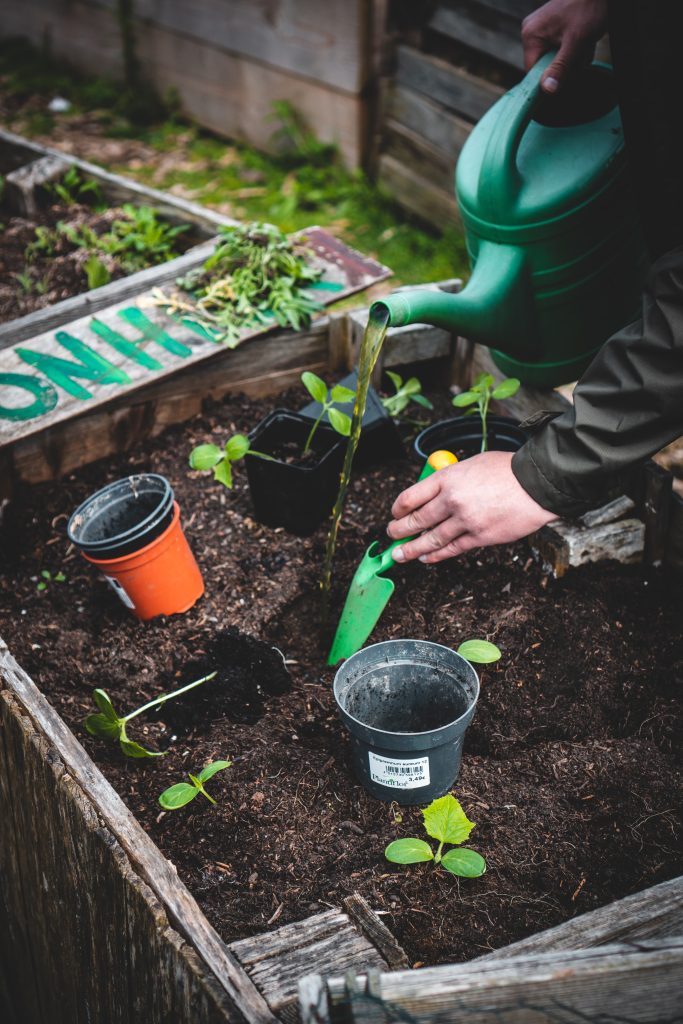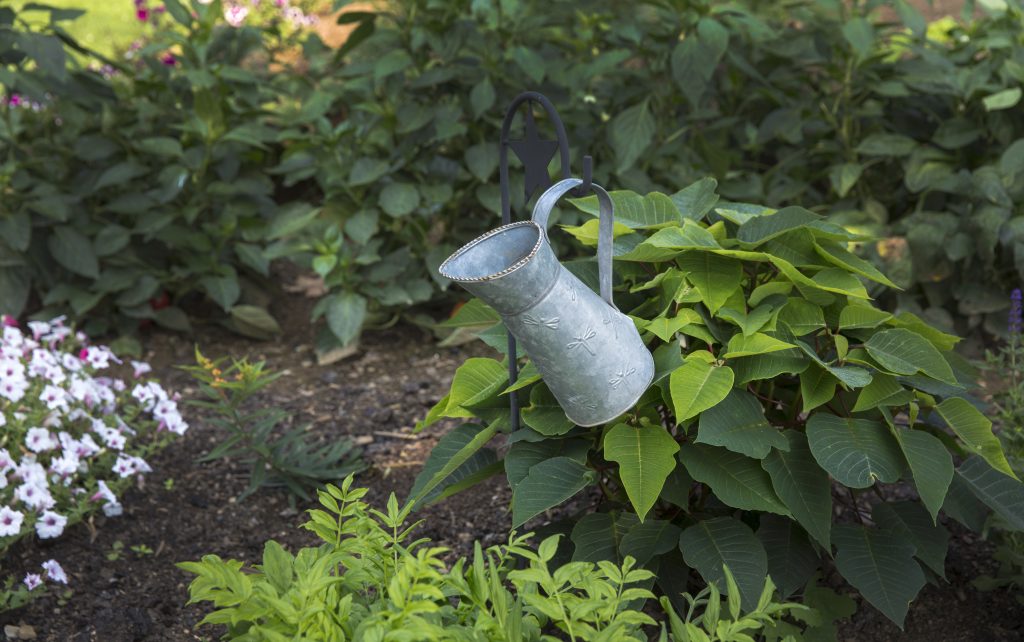If you’ve ever dreamed of cultivating a lush and vibrant garden, brimming with colorful flowers and bountiful vegetables, all while taking a sustainable approach, then you’ve come to the right place. In this article, we’ll explore the secrets to growing a stunning garden organically in the United Kingdom. From selecting the perfect plants and nurturing the soil to combating pests naturally, we’ll provide you with practical tips and expert advice that will have your garden thriving in no time. So grab your gardening gloves and get ready to embark on an exciting journey of green-thumb success!
Table of Contents
ToggleSelecting the Right Location for Your Organic Garden
Consider the Amount of Sunlight
When selecting a location for your organic garden in the UK, one of the most crucial factors to consider is the amount of sunlight the area receives. Most vegetables and fruits need at least 6 hours of direct sunlight per day to thrive. Take note of any buildings, trees, or other structures that may cast shadows on your garden plot. Choose a spot that receives ample sunlight throughout the day to ensure the success of your organic garden.
Evaluate the Soil Quality
The quality of your soil plays a significant role in the health and productivity of your organic garden. Conduct a soil test to determine the pH levels and nutrient content of the soil. Many areas in the UK have acidic soil, so you may need to amend it with lime to raise the pH if necessary. Additionally, consider the texture and structure of the soil. Organic matter such as compost or well-rotted manure can be added to improve soil structure, drainage, and fertility.
Assess the Drainage System
Proper drainage is essential for preventing waterlogging and root rot in your organic garden. Assess the drainage capabilities of the location you choose. Avoid areas that hold water for extended periods after rain or have poor drainage. If necessary, you can improve drainage by adding organic matter such as compost or by creating raised beds. Good drainage will allow the roots of your plants to thrive and reduce the risk of diseases caused by excess moisture.
Preparing the Soil for Organic Gardening
Remove Weeds and Rocks
Before planting your organic garden, it is crucial to remove any weeds and rocks from the soil. Weeds can compete with your plants for nutrients and sunlight, and rocks can hinder root growth. Take the time to clear the area thoroughly, pulling the weeds by hand or using a hoe. Remove any large rocks that may obstruct the growth of your plants.
Test the pH Levels
Testing the pH levels of your soil is an essential step in preparing it for organic gardening. A pH test kit can be purchased from a garden center or online. Most vegetables and fruits prefer a slightly acidic to neutral pH range of 6 to 7. If the pH of your soil is outside this range, you can adjust it by adding lime to raise the pH or sulfur to lower it. Testing the pH will ensure that your plants can absorb nutrients effectively from the soil.
Amend the Soil with Organic Matter
To provide your plants with the necessary nutrients and improve soil structure, it is essential to amend the soil with organic matter. Compost, well-rotted manure, and leaf mold are excellent choices for enriching the soil. These organic materials help retain moisture, encourage beneficial microbial activity, and provide a steady supply of nutrients to your plants. Spread a layer of organic matter over the soil surface and mix it into the top few inches before planting.
Choosing Organic Seeds and Plants
Opt for Organic Seeds
To ensure that your garden remains organic, it is best to choose organic seeds. Organic seeds are produced without synthetic fertilizers, pesticides, or genetically modified organisms (GMOs). They are usually certified by reputable organizations such as the Soil Association in the UK. By selecting organic seeds, you can be confident that no harmful chemicals or GMOs have been used in the production process, aligning with the principles of organic gardening.
Look for Certified Organic Plants
If you choose to buy plants instead of starting from seeds, look for certified organic plants at local nurseries or reputable suppliers. These plants are grown using organic practices and have not been treated with synthetic chemicals. Purchasing certified organic plants ensures that they have been produced in an environmentally friendly manner, promoting the health and sustainability of your organic garden.
Consider Local Varieties
When selecting plants or seeds for your organic garden in the UK, consider choosing local varieties adapted to the regional climate and growing conditions. Local varieties are often more resistant to local pests and diseases, requiring fewer inputs such as pesticides. Additionally, growing local varieties helps preserve genetic diversity and supports the local ecosystem. Check with local gardening associations or seed libraries to find out more about the native varieties suitable for your area.
Implementing Crop Rotation
Understand the Importance of Crop Rotation
Crop rotation is a fundamental practice in organic gardening that helps maintain soil fertility, control pests and diseases, and reduce the reliance on synthetic inputs. It involves regularly changing the crop families planted in specific areas of your garden. Different plants have different nutrient requirements and interact with the soil and pests in unique ways. By rotating crops, you can break pest and disease cycles, improve soil health, and maximize your garden’s productivity.
Create a Crop Rotation Plan
To implement crop rotation effectively, create a crop rotation plan for your organic garden. Divide your garden into several sections or beds and assign different crop families to each area. Rotate the crops annually, ensuring that plants from the same family are not planted in the same area for at least 3 or 4 years. Consider grouping plants with similar nutrient needs or growth habits. This systematic approach will help minimize pest and disease pressure while optimizing soil health and nutrient availability.
Follow a 3 or 4-Year Cycle
A common practice in crop rotation is to follow a 3 or 4-year cycle. The cycle typically consists of four main crop families: legumes, brassicas, alliums, and roots. In the first year, plant legumes such as peas or beans, which fix nitrogen in the soil. In the second year, switch to brassicas like cabbage or broccoli. Alliums, including onions and garlic, are typically planted in the third year, followed by root crops such as carrots or potatoes in the fourth year. After the fourth year, start the cycle again. This rotation allows each crop family to benefit from the previous year’s residue and reduces the risk of pests and diseases.
Managing Pest and Disease Control Organically
Encourage Natural Predators
In organic gardening, promoting a balanced ecosystem is key to pest and disease control. Encourage natural predators like ladybugs, lacewings, and birds to visit your garden by providing habitat, such as native flowering plants and birdhouses. These beneficial insects and birds feed on garden pests, helping to keep their populations in check. Creating a diverse and welcoming environment for beneficial creatures is an effective and natural way to manage pests without relying on harmful pesticides.
Use Organic Pest Repellents
If pest populations become problematic, there are organic pest repellents that can be used to control them. Neem oil, for example, is a natural pesticide derived from the neem tree and is effective against a wide range of insects. Other options include insecticidal soaps, garlic sprays, and diatomaceous earth. These organic pest repellents are less harmful to beneficial insects and have minimal impact on the environment when used correctly.
Practice Companion Planting
Companion planting is another strategy to manage pests and diseases organically. By planting certain plants together, you can create beneficial relationships that deter pests or attract beneficial insects. For example, planting marigolds alongside your vegetable crops can help repel pests like nematodes, aphids, and whiteflies. Similarly, growing herbs like basil or dill near tomatoes can attract beneficial insects that prey on tomato pests. Taking advantage of these companion planting principles can enhance the health and resilience of your organic garden.
Implementing Watering Strategies for Organic Gardens
Water Plants at the Right Time
Proper watering is crucial for the success of your organic garden. Water your plants at the right time to minimize water loss through evaporation and ensure optimal absorption. Water early in the morning or late in the evening when temperatures are cooler and the sun is less intense. This allows the water to penetrate the soil and reach the plant’s roots more effectively. Avoid watering during the hottest part of the day, as much of the water may evaporate before it can benefit your plants.
Use Proper Irrigation Techniques
There are several irrigation techniques you can use to water your organic garden efficiently. Drip irrigation is a popular choice among organic gardeners as it delivers water directly to the roots, minimizing wastage. It also helps prevent disease by keeping foliage dry. Another option is soaker hoses, which release water slowly and evenly along their length. This method is useful for watering beds or rows of plants. Whichever technique you choose, ensure that the water reaches the root zone without creating runoff.
Collect Rainwater for Irrigation
In the UK, where rainfall is abundant, collecting rainwater can be an excellent strategy for irrigating your organic garden. Install a rain barrel or two near your garden to catch rainwater from gutters or downspouts. Use this collected water to irrigate your plants during dry spells or when water restrictions are in place. Rainwater is chemical-free and slightly acidic, making it ideal for watering plants. Collecting rainwater also reduces reliance on municipal water supplies and conserves this valuable resource.
Feeding Your Organic Garden
Utilize Compost
Compost is often referred to as “black gold” in organic gardening due to its numerous benefits. It improves soil structure, retains moisture, and adds essential nutrients to the soil. Start a compost pile or use a compost bin to recycle kitchen scraps, yard waste, and other organic materials. Once the compost is fully decomposed, incorporate it into your garden beds or use it as a top dressing around your plants. Regularly adding compost to your organic garden will provide a steady supply of nutrients and promote overall soil health.
Apply Organic Fertilizers
In addition to compost, organic fertilizers can also be used to provide specific nutrients to your plants. Organic fertilizers are derived from natural sources and often contain a combination of nitrogen, phosphorus, and potassium along with trace elements. Examples include bone meal, fish emulsion, and seaweed extracts. When applying organic fertilizers, follow the package instructions to avoid overfertilizing and causing nutrient imbalances. Organic fertilizers feed the soil ecosystem, ensuring healthy plants and sustainable garden practices.
Use Mulch to Boost Soil Nutrients
Mulching is an effective method to conserve moisture, suppress weeds, and add nutrients to your organic garden. Spread a layer of organic mulch, such as straw, wood chips, or leaves, around your plants. This helps retain soil moisture by reducing evaporation and insulating the roots from extreme temperature fluctuations. As the mulch breaks down, it enriches the soil with organic matter, releasing nutrients gradually over time. Mulching also improves soil structure, reduces erosion, and supports beneficial microbial activity.
Weed Control in Organic Gardens
Mulching to Suppress Weeds
Weed control is an ongoing task in any garden, and in organic gardening, it is essential to manage weeds without the use of synthetic herbicides. Mulching is an effective and organic method to suppress weeds. Apply a layer of organic mulch, around 2 to 4 inches thick, around your plants and between rows. This creates a barrier that prevents weed seeds from germinating and competing with your plants for nutrients and sunlight. Regularly replenish the mulch as it naturally decomposes over time.
Hand Weeding Techniques
While mulching can significantly reduce weed growth, some weeds may still find their way into your organic garden. To remove them, use hand weeding techniques. Get down close to the ground and carefully pull out the weeds by hand, ensuring you remove the entire root system. Be vigilant and remove weeds as soon as you spot them to prevent them from spreading. Hand weeding also allows you to interact with your garden, providing an opportunity to observe the health of your plants.
Utilize Vinegar-Based Weed Killers
For particularly stubborn weeds, vinegar-based weed killers can be an effective organic alternative to synthetic herbicides. Mix vinegar with water and a small amount of dish soap to create a natural herbicide. Apply the mixture directly onto the leaves and stems of the weeds, avoiding contact with your desirable plants. The acetic acid in vinegar disrupts the weed’s cell structure, causing it to wither and die. While vinegar-based weed killers are non-selective and can harm any plant they come into contact with, they are a safe and eco-friendly option when used carefully.
Maintaining Good Organic Garden Practices
Regular Soil Testing
Regular soil testing is an essential practice in maintaining a healthy organic garden. Test your soil every few years to monitor pH levels and nutrient content. Soil testing kits are readily available for purchase and provide valuable information about the current state of your soil. By understanding the specific nutrient needs of your plants, you can tailor your organic fertilization and soil amendment practices accordingly. Monitoring soil health allows you to address any deficiencies or imbalances promptly, ensuring optimal growing conditions for your plants.
Monitoring and Taking Action
Being proactive and regularly monitoring your organic garden is key to identifying and addressing any potential issues promptly. Regularly inspect your plants for signs of pests, diseases, or nutrient deficiencies. Look for chewed leaves, discolored foliage, or abnormal growth patterns. Early detection can help prevent the spread of pests and diseases and can lead to quicker and more effective solutions. Taking action promptly will minimize any negative impacts on your organic garden and help ensure its long-term success.
Replenishing Nutrients Annually
To maintain optimal soil health and fertility in your organic garden, it is essential to replenish nutrients annually. Even with the use of compost and organic fertilizers, nutrients can become depleted over time. Therefore, add a balanced organic fertilizer or compost to your garden beds at the beginning of each growing season. This replenishment ensures that your plants have a continuous supply of essential nutrients throughout their growth cycle. By providing consistent nourishment, you are fostering the health and productivity of your organic garden.
Harvesting and Storing Organic Produce
Harvest at the Right Time
Harvesting your organic produce at the right time is crucial to ensure maximum flavor, nutritional content, and quality. Each crop has its own indicators of ripeness, such as color, texture, or size. Refer to seed packets, gardening guides, or consult with experienced gardeners to determine the optimal time for harvesting each vegetable or fruit. Harvesting too early or too late can result in inferior taste and texture. Enjoy the fruits of your labor by picking your organic produce when it is at its peak of ripeness and flavor.
Properly Store and Preserve
Proper storage and preservation techniques are essential to extend the shelf life of your harvested organic produce. Some vegetables and fruits can be stored in a cool, dark place, such as a cellar or pantry. Others may require refrigeration to maintain freshness. Remove any damaged or bruised produce before storage to prevent the spread of rot or disease. Additionally, consider preserving your organic harvest through methods such as freezing, canning, or pickling. These techniques allow you to enjoy your homegrown produce even during the offseason.
Save Seeds for Future Plantings
One of the wonderful aspects of organic gardening is the ability to save seeds for future plantings. When you come across a particularly healthy and productive plant in your garden, consider saving its seeds for the next growing season. Allow the fruit or vegetable to mature fully on the plant, harvest the seeds, and let them dry completely before storing them in a cool, dry place. By saving seeds from your best-performing plants, you are preserving their desirable traits and ensuring the continued success of your organic garden for years to come.
Growing an organic garden in the UK is a rewarding and sustainable endeavor. By carefully selecting the right location, preparing the soil with organic amendments, choosing organic seeds and plants, implementing crop rotation, managing pests and diseases organically, watering strategically, feeding the garden with compost and organic fertilizers, practicing weed control, maintaining good garden practices, and harvesting and storing organic produce properly, you can create a thriving organic garden that benefits both you and the environment. So roll up your sleeves, grab your gardening tools, and get ready to experience the joys of growing your own organic garden in the beautiful UK!









